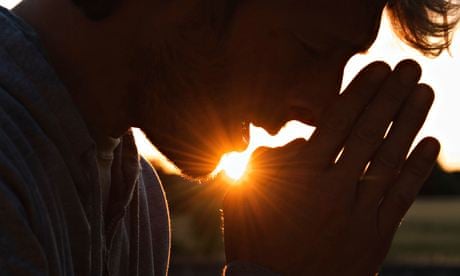All things bright and beautiful was one of the more memorable hymns I used to mime at primary school. In fact, the one thing that singing hymns taught me was that I preferred Bob Dylan's Blowin' in the Wind to anything written by Cecil Frances Alexander.
I was reminded of this recently when my school received a letter from Hertfordshire's Standing Advisory Council on Religious Education (Sacre), asking us to review our collective worship policy and ensure it is being implemented. It is still a legal requirement that all students in England and Wales participate in a daily act of worship, which is to be "wholly or mainly of a broadly Christian character". Although this seems remarkably old-fashioned, exemptions are only granted to faith schools (where worship will reflect the school's religious character) or if the local Sacre acknowledges that a school's students are mostly of a different faith to Christianity.
Although I took ownership of reviewing and updating the policy, I am uneasy with the moral implications of getting non-religious students to take part in religious worship, as well as how this demeans the acts of devotion. Despite most students on our school roll being identified as Christian, it is clear from teaching religious studies that the majority are nominally Christian, which suggests that religion plays little or no role in their daily lives.
Instead of implementing existing policies that focused on traditional Christian worship, such as prayer and hymns, I wanted to explore whether a redrafted policy could cover three key outcomes that are more suitable for our students. These included: enhancing children's spiritual, moral, social and cultural awareness through self-reflection, which necessitates serious thought about one's character, actions and beliefs; engaging them through relevant cross-curricular links; and providing an opportunity to use a range of activities that support collective worship while fulfilling our legal obligations. Each of these outcomes is discussed in more detail below.
First, although an obstacle to including self-reflection as worship is the basic definition that worship is "reverence and adoration for a deity", an extended definition includes a "great admiration or devotion shown towards a person or principle". It is not set in stone, then, that collective worship needs to include devotion to God. For non-faith schools with secular or multi-faith demographics, collective worship could involve reflection on the things, or principles, that give students' lives meaning.
Worship based on the extended definition could, for instance, include admiration for the principles of agape (unconditional, selfless love), compassion and empathy or the spiritual richness of historical figures such as Martin Luther King Jr. Importantly, statutory guidance states that an act of worship which is broadly Christian need not contain only Christian material provided that, taken as a whole, it reflects the traditions of Christian belief.
Second, reflection could also focus on the importance of community cohesion, the awe and wonder of life and the beauty of the natural world. Central to this are cross-curricular links as well as links to citizenship and PSHE; examples could include Anti-Bullying Week, Remembrance Sunday and World Environment Day. One advantage of linking worship to areas not directly associated with religion is overcoming the obstacle of secular apathy to anything religious by creating a shared understanding of the values that religious and non-religious people hold dear.
Third, art, music and film can be used to prompt reflection on a variety of issues and can be devised by students. Importantly, this allows for a variety of activities to be used in collective worship. Our redrafted policy is built into an assembly rota that covers topics from World Peace Day to Dilwali and Eid al-Fitr alongside Christian topics such as Lent. Students are tasked with exploring the spiritual issues within the topic and can include moments of silence, song or appreciation of visual arts that allow them to participate actively or passively. For instance, a song or picture that provokes awe and wonder or an emotive response could be used for reflection or thinking time. Although the legal framework for collective worship cannot include assemblies per se, these activities can be considered as worship under the current guidelines.
I understand that many will object to any form of collective worship and I certainly agree that there is a limit to the appeal of traditional Christian worship for many students. Nonetheless, until the law changes, it is still a legal requirement and can be used to promote students' spiritual, moral, social and cultural awareness. More specifically, overt acts of religious devotion do not need to dominate collective worship; as I said earlier, Bob Dylan can have as much of an impact as Holy, Holy, Holy.
Andrew Jones is head of religious studies and sociology at Goffs School in Cheshunt, Hertfordshire. He is also an experienced GCSE examiner. Find his department website and on Twitter as @GoffsRS.

Comments (…)
Sign in or create your Guardian account to join the discussion